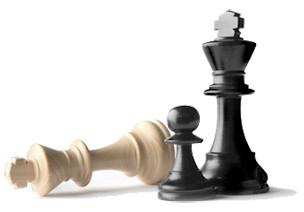
Writing the megaproject proposal is akin to writing a CV. The proposal is your only platform to communicate your expertise, "knowledge" leadership, and breadth of your services and capabilities. It is a persuasive document.
What makes this task next to impossible is an information volume constraint – your proposal shall be digested (read, understood, categorized, analyzed) by the evaluation team within 2 - 3 weeks.
The project proposal is an executive summary of the Front End Engineering and Design (FEED) and Front End Management (FEM) packages. Their total size for a desalination mega-plant of 400 MLD reaches 970 Mbytes.
“Zipping” FEED and FEM into the executive summary always undergoes a loss of information consistency, traceability, and granularity. Zipping breaks cause-and-effect logic. Patched with assumptions and promises, it creates a sense of incompleteness – the opposite of persuasiveness sought after. Every EPC contractor has its own proprietary "algorithm" of zipping – what information pieces shall be hidden or deliberately shown to the customer.
Today customers are much more knowledgeable and quicker at learning, thanks to the internet. To produce the winning proposal, the EPC contractor should know the audience – who is on the evaluation team, and move attention to the core domains of the team experts.
The transparency level of a technical proposal is a huge differentiator. Transparency is a game. Low level impairs the proposal quality. Too high a level creates a quick sense of "thought" leadership but inevitably leads to a loss of corporate know-how. On the other hand, it gives the customer clues as to how to downgrade other proposals.
The technical proposal is traditionally silent about the plant design for safety, reliability, construction, commissioning, and maintenance. So it is easy to stand out from the competition. The question is how to select key points truly representing the holistic picture of the plant construction. It reminds me of the parable of the blind men and an elephant.

Inherent information incompleteness, constantly evolving customer audiences, and the transparency game turn writing project proposals into Art. How to master it in the Digital Age?
True North is the digital-twin-based model of project engineering. It keeps the information structure and cause-and-effect links unbroken. The two biggest components of this model - the FEED and FEM packages - shall be paperless and fully accessible via the Internet.
To preserve the information traceability, all the data in the project proposal shall be web-linked to the information sources contained in FEED and FEM. Similarly, the executive summary links shall lead to the project proposals.
What the customer never gets from the EPC contractors is the project and plant metrics. They convey a sense of the proposal's completeness and build up the customer's trust without the know-how leak. It is a winning formula.
The above-mentioned requirements for the project proposal lie at the core and drive the development of the crenger.com platform. Its current writing skills may be judged by project proposal samples posted on the website. The auto-generated proposal includes 7 general sections.
- Selected processes and functional requirements
- How isolated processes are turned into subsystems
- Subsystems scoping and subcontracting rationale
- Technical specification of subsystems and original equipment (OE)
- OE manufactures prequalification and selection
- Plant functionality validation
- Plant documentation hand-over & knowledge sharing
In addition, the proposal writer automatically quantifies risks based on project complexity, engineering design maturity, cost estimation platform maturity, and others described in "Handling Megaproject Risks". Normally, risk identification, quantification, and mitigation are part of the customer’s procedure for bid screening.
Project schedules (for work packages, purchase orders, commissioning, and submittals) are a critical indicator for the project proposal maturity. Traditionally, at a bidding time this information is not available. It means that the payment schedule suggested by the bidder is not conditioned by the project's progress. This drawback is serious enough to disqualify the bidder.
The customer should have all the information needed for project financing including the dates of the documentation package submissions. Current practice is to limit the packages count to 3 corresponding to 30, 60, and 90% of the project completion. The above-mentioned auto-generated proposal sample, for instance, lists the contents and submission dates for each package. The user may easily change the number of packages. With the advent of Digital Twins, this practice will be replaced with online data submission.
The winning approach to Quality Management is to provide solid dates and metrics of the work to be executed regarding the Inspections and Tests Plan. For example, the total count of inspections and tests related to original equipment, piping, and vessels in the plant of 440 MLD surpasses 1200, commissioning checks and tests – 210509, and assembly and calibration certificates to be signed off - 10240. These figures suggest that the impact of commissioning on the project schedule and the project budget is heavy; its mitigation recipes are part of the plant contractor's know-how.
Selected by crenger.com approach for Time Management summary is to provide the workloads and activities lists for each staff member. The customer is entitled to demand that no substitution of personnel be tolerated once the contract has been awarded except in extreme circumstances and with the written approval of the customer.
Crenger.com turns "Qualifications of Key Personnel" into the proposal's strong point. It automatically generates CVs demonstrating qualifications in areas relevant to the scope of services from previously executed projects. It records, tracks, and analyzes every move of the user. Crenger.com can even assess the personnel's ability to produce and implement non-typical solutions – to innovate.
As crenger.com maintains the database of the previously executed projects accessible online, the customer may easily check the contractor's past performance and experiences (including outstanding issues tracking and the project changes)
